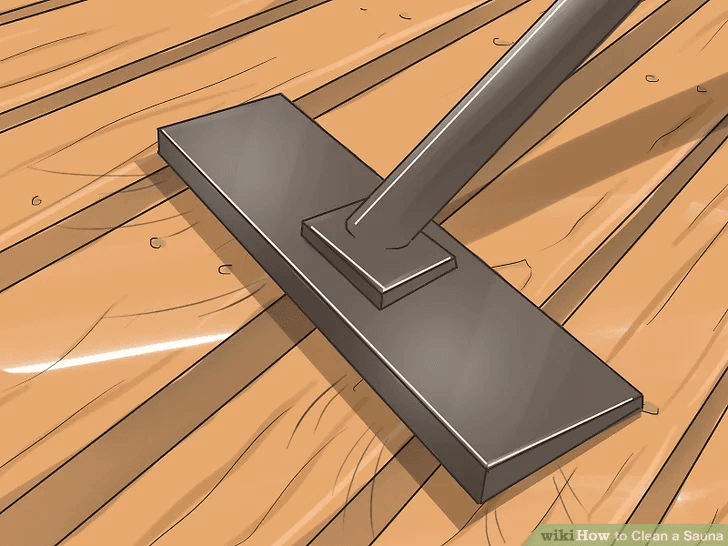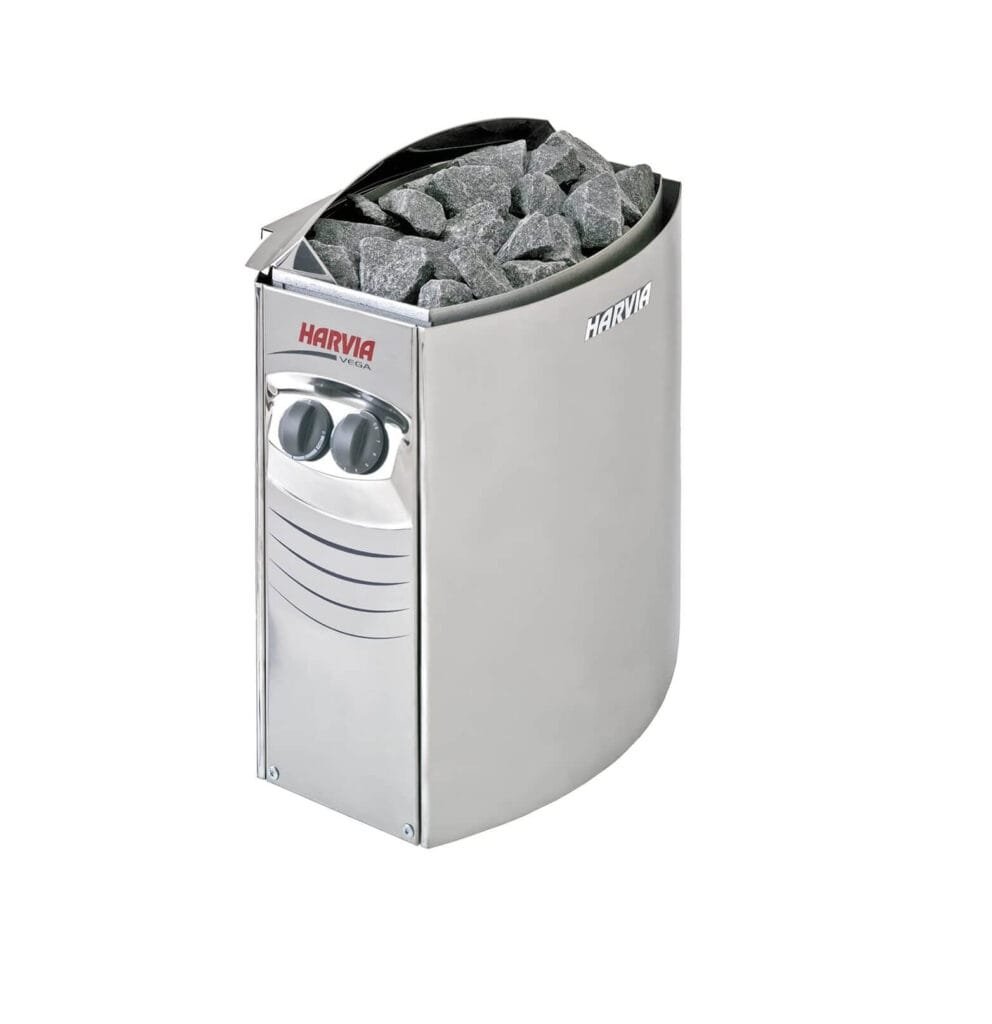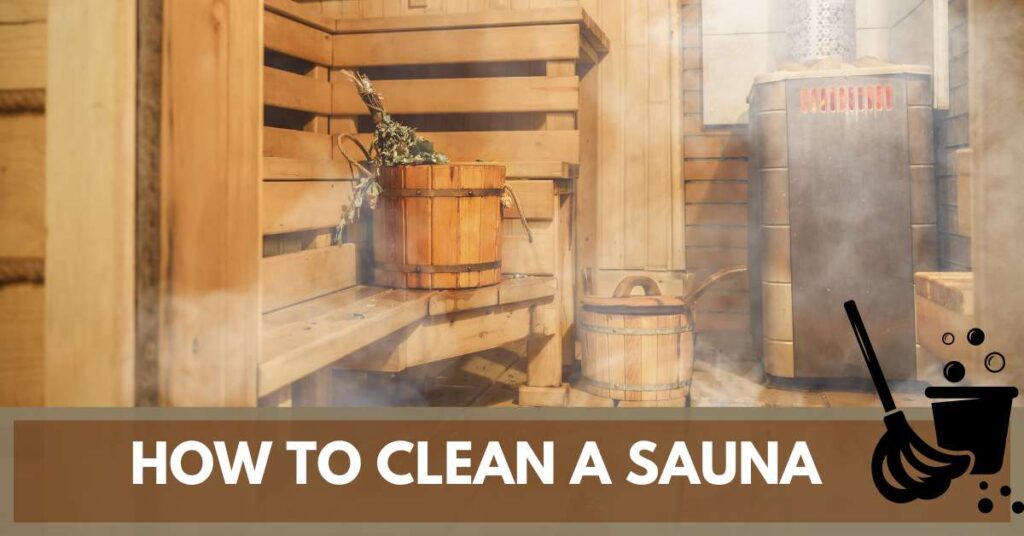Now that spring is in the air, it’s the perfect time to refresh, “dust off” and air out your sauna! A spring clean of your sauna will not only prepare it for the warmer months but also help extend the lifespan of your sauna wood, ensuring you continue to enjoy those rejuvenating sauna sessions.
In this guide, we’ll walk you through how to effectively clean your sauna wood, maintain its beauty, and answer common questions like “Do you need to oil the wood in a sauna?” and “How do you get sweat stains out of a cedar sauna?” So let’s get started!
Key Takeaways:
- Regular cleaning during spring will extend your sauna wood’s lifespan and keep it looking fresh for the warmer months.
- Always use natural, mild cleaners to protect sauna wood, and avoid harsh chemicals that could cause damage.
- Maintaining proper ventilation after each session and treating stains promptly will help prevent wood deterioration.
- Using towels, practicing regular maintenance, and understanding the different sauna types will enhance your overall sauna experience.
Shym Saunas is dedicated to providing high-quality saunas, hot tubs, and accessories that emphasize luxury, sustainability, and well-being. Our saunas are designed to blend traditional Finnish craftsmanship with modern sophistication, offering a premium wellness experience that promotes relaxation, connection, and well-being.
Understanding Different Types of Saunas
Before diving into cleaning techniques, it’s helpful to understand the variety of saunas available, as cleaning needs may vary slightly between them. Saunas can generally be categorised based on humidity levels:
- Wet Saunas (Steam Baths): Also known as Turkish baths, these saunas maintain temperatures up to 70°C (158°F) with relative humidity around 100%. The high humidity levels create a steam-filled environment.
- Dry Saunas (Finnish Saunas): These saunas operate at higher temperatures, typically between 80°C and 100°C (176°F to 212°F), but with much lower humidity levels below 20%. The dry heat promotes intense sweating.
In addition to these traditional types, there are various other saunas you might encounter:
- Infrared Saunas
- Salt Saunas
- Bio Saunas
- Russian Saunas
- Tropical Baths
These saunas can be installed indoors or outdoors and may have specific maintenance requirements based on their unique features. Regardless of the type, regular cleaning and maintenance are crucial for all saunas to ensure a safe and enjoyable experience.
Why It’s Important to Clean Your Sauna Wood
If you want to keep your sauna in the best condition, it’s essential to clean the wood regularly.
- Sauna wood, whether cedar or another type, is exposed to high heat, moisture, and sweat—factors that can damage it over time if not properly maintained.
- Keeping your sauna wood clean helps extend its lifespan and prevents the buildup of bacteria, mold, and dirt.
Essential Tools and Products for Cleaning Sauna Timber Surfaces
When cleaning sauna wood, using the right tools and products is vital. Here are some essentials:
- Natural Cleaners: Mild solutions like vinegar and water, baking soda paste, or specialised sauna wood cleaners are recommended. In Finland, the standard soap for sauna cleaning is mäntysuopa, a soap made from pine residues. If you can’t get mäntysuopa, any natural and mild soap will work just as well.
- Soft Brush and Cloth: Use a soft-bristled brush for scrubbing and a clean cloth for wiping. Avoid abrasive materials that can scratch the wood.
- Fine Sandpaper (150–180 Grit): Useful for gently removing stubborn stains without damaging the wood.
- Avoid Harsh Chemicals: Steer clear of bleach, strong disinfectants, or high-pressure washers, as they can damage the sensitive sauna wood.
Never use high-pressure washers or harsh disinfectants, as they can damage the sensitive sauna wood. Instead, stick to natural or mild cleaning solutions.
Step-by-Step Guide on How to Clean Sauna Wood
Step 1: Sweep and Vacuum the Sauna

- The first step in cleaning your sauna wood is to remove any loose dirt or dust.
- Use a vacuum cleaner with a soft brush attachment to sweep up the dirt. This will help prevent any scratching or damage to the wood surface.
PRO TIP: Be sure to vacuum in the direction of the wood grain to avoid damaging it.
Step 2: Wash with a Mild Cleaner

- Once the loose dirt is gone, it’s time to wash the wood.
- Use a sauna wood cleaner or a mix of natural products like vinegar and warm water.
- Spray the solution on the wood and let it sit for a few minutes.
- Then, use a soft cloth to scrub the wood gently, ensuring you reach all the surfaces.
PRO TIP: Avoid using disinfectants, as they can bleach the wood and cause damage. Stick to mild, natural solutions to keep the wood in great condition. Rinse the wood thoroughly with clean water and let it air dry.
Step 3: Remove Sweat Stains from Cedar Sauna

How Do You Get Sweat Stains Out of a Cedar Sauna?
For light sweat stains, use a mixture of warm water and mild detergent applied with a soft cloth. For tougher stains:
- Mix baking soda and water to form a paste.
- Apply it to the stain.
- Gently scrub with a soft brush.
- Rinse thoroughly with clean water.
Pro Tips:
- For persistent stains, lightly sand the area with fine-grit sandpaper, always moving along the wood grain.
- ALWAYS use a towel when sitting in the sauna. This will help minimise sweat stains on the wood and reduce cleaning efforts in the long run.
Step 4: Deep Clean and Disinfect Ventilation Areas

Sauna maintenance doesn’t stop at cleaning the wood; you also need to take care of the ventilation areas. The sauna heaters, stones, and other accessories can gather dust and debris over time.
- Use a natural disinfectant like lemon juice or a vinegar solution to clean these areas. Make sure everything is completely dry before using the sauna again.
- Heaters and Stones: Use a soft brush or vacuum attachment to remove dust and debris. For wood-burning stoves, remove ash regularly.
- Ventilation Grates: Remove and clean them with a natural disinfectant like lemon juice and water.
- High-Touch Areas: Wipe down door handles and control panels.
How to Clean Sauna Heater

Keeping your sauna heater clean is essential for efficient operation and safety.
Step 1: Turn Off and Cool Down
Before cleaning, make sure the heater is turned off and completely cooled to avoid burns or electrical hazards.
Step 2: Remove Loose Debris
Use a soft brush or vacuum cleaner to remove dust and debris from the heater’s exterior. Pay attention to vents and crevices where dust accumulates.
Step 3: Clean the Heater Surface
Wipe down the exterior with a damp cloth lightly moistened with a mild soap solution. Avoid getting water into any electrical components.
Step 4: Inspect the Heater Elements
Check the heating elements for signs of damage or excessive wear. If you notice any issues, consult a professional technician.
Step 5: Reassemble and Test
After cleaning, ensure all parts are dry. Reassemble any components you removed and turn on the heater briefly to confirm it’s working properly.
How to Clean Sauna Accessories
Sauna accessories like stones, pails, and ladles also need regular cleaning.
Cleaning Sauna Stones
- Step 1: Remove the Stones
Carefully remove the stones from the heater, noting their arrangement for easy reassembly. - Step 2: Inspect and Clean
Check for cracks or disintegration. Dispose of damaged stones safely. Rinse the good stones under warm water to remove dust and debris. - Step 3: Dry Thoroughly
Allow the stones to air dry completely before placing them back in the heater to prevent steam explosions. - Step 4: Reassemble
Place the stones back, ensuring proper airflow by arranging them as they were.
Cleaning Pails and Ladles
- Step 1: Wash with Mild Soap
Use warm water and mild soap to wash pails and ladles, removing any residue. - Step 2: Rinse and Dry
Rinse thoroughly to remove soap residue and dry completely to prevent mold growth.
Cleaning Other Accessories
- Backrests and Cushions: Wipe down with a damp cloth and mild cleaner. Ensure they’re dry before the next use.
- Thermometers and Hygrometers: Dust gently with a soft cloth. If necessary, wipe with a slightly damp cloth and dry immediately.
Wood Maintenance: What Is the Best Treatment for Sauna Wood?
Treating Wood for Better Longevity
Properly treating your sauna wood can significantly extend its lifespan. The best way to do this is by using a breathable wood preservative product. This could be paraffin oil or wax, which helps protect the wood from moisture and dirt while enhancing its natural beauty. Choose products that are safe for high temperatures, as regular wood treatments may not be suitable.
Do You Need to Oil the Wood in a Sauna?
Oiling the wood in a sauna can be beneficial, but it’s not always necessary. If you decide to oil the wood, use a product that is specifically designed for sauna use. Oils can help the wood resist moisture, but they can also alter its natural scent and appearance. It’s important to weigh the pros and cons before deciding.
Common Sauna Maintenance Questions
How Do You Restore Wood in a Sauna?
Over time, sauna wood may lose its original luster. Restoring the wood can bring it back to its former glory. Start by lightly sanding the surface with fine grit sandpaper (150–180 grit) to remove any stains or discoloration. After sanding, clean the wood thoroughly, and apply a suitable wood preservative to protect it against future damage.
How Often Should You Clean Your Sauna?
The frequency of cleaning depends on how often the sauna is used. For regular use (several times a week), a weekly cleaning is ideal. Light cleaning, such as wiping down the benches and ensuring good ventilation, should be done after every use. More thorough cleaning can be done once a month to keep the sauna in optimal condition.
Avoid These Mistakes When Cleaning Your Sauna Wood
Cleaning your sauna wood improperly can do more harm than good. Here are some mistakes to avoid:
- Using Bleach or Harsh Disinfectants: Bleach can be highly damaging to sauna wood and poses a health risk when used in high-temperature environments. Stick to natural cleaning solutions like vinegar or lemon juice.
- Using a Pressure Washer: Sauna wood is delicate, and a pressure washer can easily damage its surface. Instead, use a damp cloth and a soft brush for cleaning.
- Not Allowing Wood to Dry Properly: After cleaning, always allow the wood to air dry completely before using the sauna again. Moisture can cause mold growth and damage the wood if not properly dried.
How to Handle Mold in Your Sauna
If you find mold in your sauna, it’s important to take action quickly. Instead of using bleach—which can release harmful fumes in a heated environment—use a mix of hydrogen peroxide and baking soda. Apply this solution to the affected area, scrub gently, and then rinse thoroughly with water.
Should You Seal Your Sauna Wood?
Sealing your sauna wood can provide additional protection, but it must be done correctly. Only seal the exterior surfaces of the sauna, as sealing the interior can inhibit the wood’s ability to release humidity, causing cracking or warping. If you do seal the wood, choose a breathable sealant suitable for high temperatures.
Tips to Keep Your Sauna Wood Clean for Longer
- Use Towels to Prevent Sweat Stains: Always bring a towel to sit on while using the sauna. This simple practice helps protect the wood from sweat stains, reducing the cleaning required later.
- Ventilate After Each Use: To prevent moisture buildup, leave the sauna door open after each session. This allows accumulated steam to escape and stops it from permeating the wood.
- Avoid High-Pressure Cleaning Tools: Never use a high-pressure washer or yard hose on sauna wood. The pressure and excess moisture can damage the wood, leading to deterioration over time.
- Shower Before Sauna Use: Showering before entering the sauna reduces the amount of dirt and sweat you bring in, keeping the environment cleaner and more hygienic.
- Wipe Down Surfaces with a Damp Towel: Use a moist (but not overly wet) towel to wipe down the benches and other surfaces after each session. This helps prevent excess moisture from seeping into the wood, extending the life of your sauna.
- Allow Sauna to Cool Before Cleaning: Ensure that the sauna has cooled down before you begin cleaning it. Cleaning hot surfaces can be unsafe and may result in damage to the wood.
- Avoid Damp Swimsuits: Enter the sauna dry to minimise unnecessary moisture. Wet swimsuits can cause additional dampness, which is harmful to the wood and encourages mold growth.
FAQs on Cleaning Saunas
Can I Paint or Stain My Sauna Interior?
No, you should not paint, stain, or varnish the interior of your sauna. Doing so will inhibit the wood’s ability to release humidity, which can cause cracking or warping. Additionally, artificial finishes may produce toxic fumes when heated. The only exceptions are the exterior wood, handles, and doors, which can be treated with polyurethane or a wood sealant to protect them from exposure and dirt accumulation.
What Should You Wear in a Sauna to Avoid Stains?
To prevent stains, it’s best to wear a towel or light cotton clothing. Avoid synthetic fabrics that trap sweat. For more details, check out our article on what to wear in a sauna.
Why Are Towels So Important in the Sauna?
Towels are crucial to protect the wood surfaces from sweat stains. By placing a towel on benches and leaning surfaces, you reduce the amount of sweat that gets into the wood, making it easier to keep the sauna clean and extending the wood’s lifespan.
How Often Should You Clean Your Cedar Sauna?
- Low Frequency of Use (1-2 Times per Week):
- Clean the sauna at least once a month to maintain hygiene and wood integrity.
- High Frequency of Use (4 or More Times per Week):
- Clean the sauna thoroughly each week to prevent the buildup of sweat, dirt, and moisture.
- After Every Use:
- Wipe down benches and surfaces and leave the door open to allow proper ventilation.
Is There a Difference in Cleaning Between a Cedar Sauna and a Thermowood Sauna?
Yes, there are differences in cleaning between cedar and thermowood saunas. Both types of wood are relatively low-maintenance, but they have slightly different care requirements.
- Cedar Saunas: Cedar is naturally resistant to decay and requires minimal maintenance. Regular cleaning with mild soap and water is usually sufficient.
- Thermowood Saunas: Thermowood is also low-maintenance and does not need frequent treatments or special care to maintain its integrity. A simple routine of regular cleaning is enough to keep it in good condition. For added protection, paraffin oil can be used, which is colorless and odorless but will slightly darken the wood.
What Is the Best Treatment for Sauna Wood?
The best treatment for sauna wood is a breathable wood preservative such as paraffin oil, which helps protect the wood from moisture while enhancing its natural beauty. For more detailed guidance, refer to our article on sauna wood treatment with paraffin oil.
Wrapping Up
Keeping your sauna wood clean and well-maintained is key to enjoying the best sauna experience. By following these steps and using the right tools and products, you’ll be able to keep your sauna in great condition for years to come.




